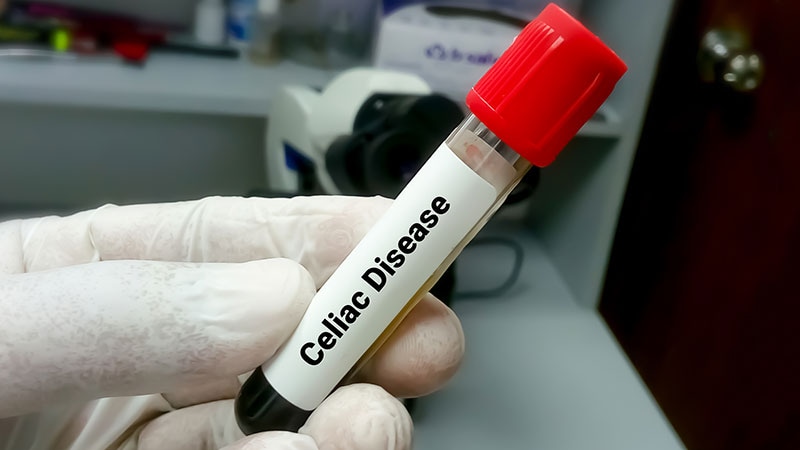No-Biopsy Approach for Celiac Disease Diagnosis with High Serum tTG-IgA
Core Concepts
Avoiding diagnostic bowel biopsy for celiac disease with high serum tTG-IgA is safe and reliable.
Abstract
The study focused on adults suspected of having celiac disease without IgA deficiency and not on a gluten-free diet. It evaluated the reliability of serum tests for diagnosing celiac disease based on duodenal villous atrophy. The study cohort included 436 adults from 14 centers across four continents. Positive serum tTG-IgA was detected in 83% of participants, with a positive predictive value of 95.9% and a negative predictive value of 90.4%. A no-biopsy approach was deemed safe and reliable for diagnosing celiac disease in adult patients with high serum tTG-IgA.
Customize Summary
Rewrite with AI
Generate Citations
Translate Source
To Another Language
Generate MindMap
from source content
Visit Source
www.medscape.com
No-Biopsy Approach to Celiac Disease Diagnosis Safe for Some
Stats
Positive serum tTG-IgA was detected in 363 (83%) participants; negative serum tTG-IgA was detected in 73 (17%).
The test correctly diagnosed duodenal villous atrophy in 97.5% of patients with serum tTG-IgA concentrations greater than 10 times the ULN.
Quotes
"We found no evidence that important comorbidities would be missed by adopting a no-biopsy strategy."
Key Insights Distilled From
by Marilynn Lar... at www.medscape.com 09-19-2023
https://www.medscape.com/viewarticle/996605
Deeper Inquiries
How might the findings of this study impact the current diagnostic practices for celiac disease?
The findings of this study suggest that in adult patients without IgA deficiency and with high serum anti-tissue transglutaminase IgA levels, a no-biopsy approach could be a safe and reliable method for diagnosing celiac disease. This approach could potentially streamline the diagnostic process, reducing the need for invasive procedures like endoscopic duodenal biopsy. Implementing this no-biopsy strategy could lead to cost savings, reduced patient discomfort, and quicker diagnosis, ultimately improving patient care and outcomes in the management of celiac disease.
What potential drawbacks or criticisms could be raised regarding the no-biopsy approach proposed in the study?
While the no-biopsy approach proposed in the study shows promise, there are potential drawbacks and criticisms that could be raised. One concern is the possibility of missing other gastrointestinal conditions or comorbidities that may present similarly to celiac disease but require different diagnostic and management approaches. Additionally, there may be cases where the serologic tests yield false positives or false negatives, leading to misdiagnosis or delayed treatment. Furthermore, the study had limitations such as a low number of participants in some subgroup analyses and a high pretest probability of celiac disease, which could affect the generalizability of the findings.
How can the concept of a no-biopsy approach in celiac disease diagnosis be applied to other medical conditions or diagnostic procedures?
The concept of a no-biopsy approach in celiac disease diagnosis could potentially be applied to other medical conditions or diagnostic procedures where serologic tests have high sensitivity and specificity. For conditions with well-established serologic markers and clear diagnostic criteria, eliminating the need for invasive biopsies could improve patient experience, reduce healthcare costs, and expedite diagnosis and treatment initiation. This approach could be particularly beneficial in conditions where biopsies pose risks or are burdensome for patients. However, careful consideration must be given to the specific characteristics of each condition and the reliability of serologic tests before implementing a no-biopsy approach in clinical practice.
0
